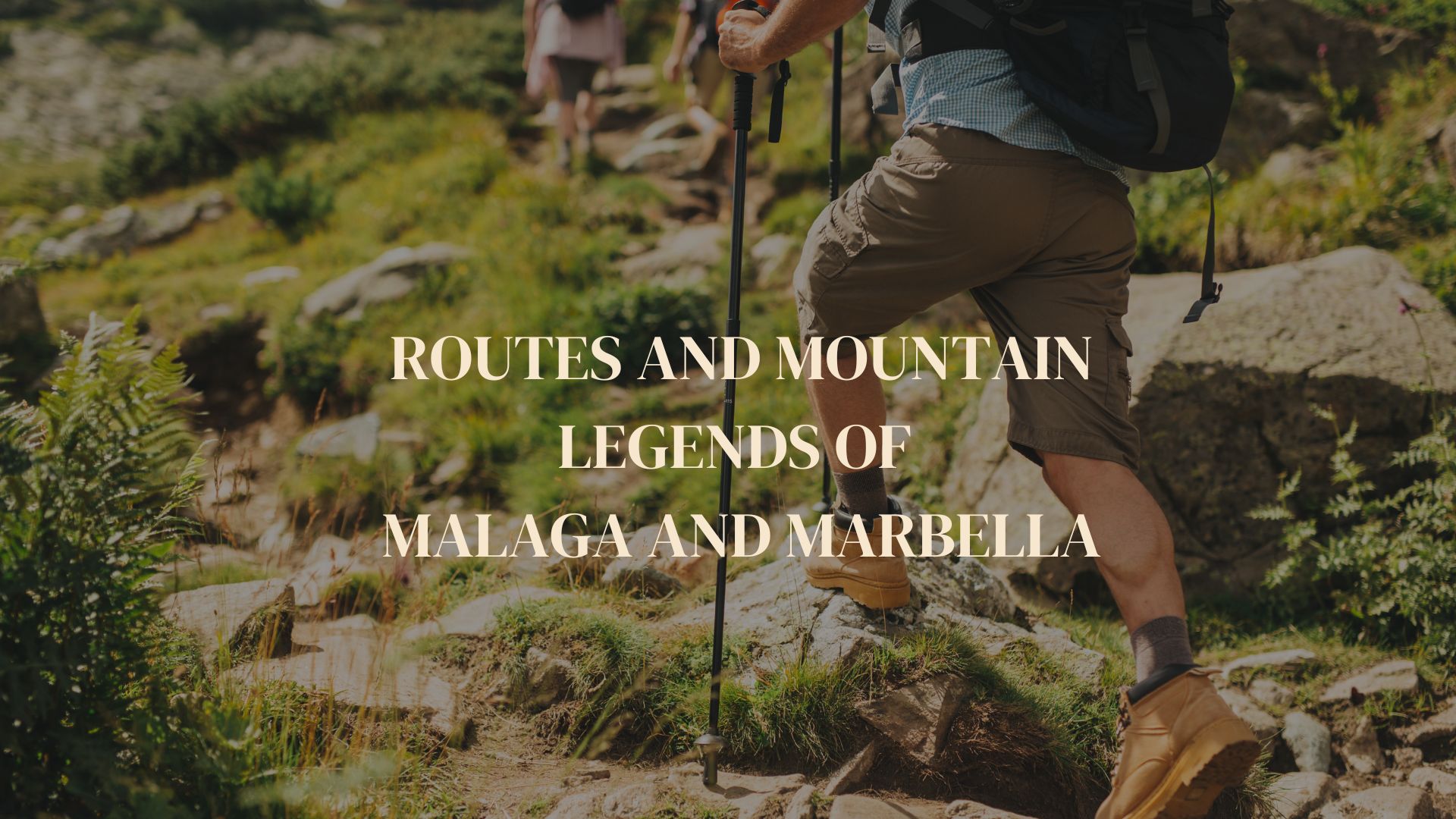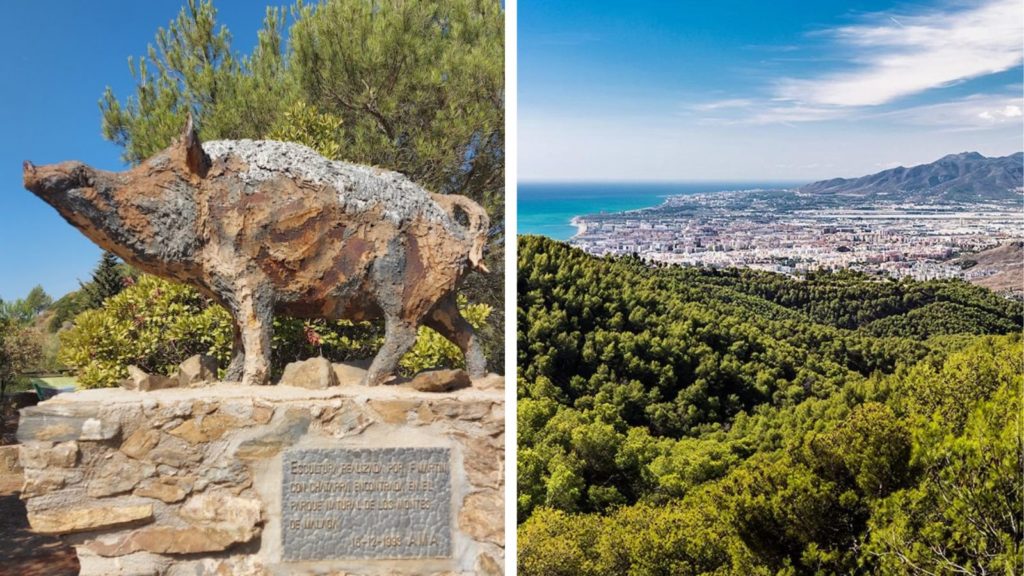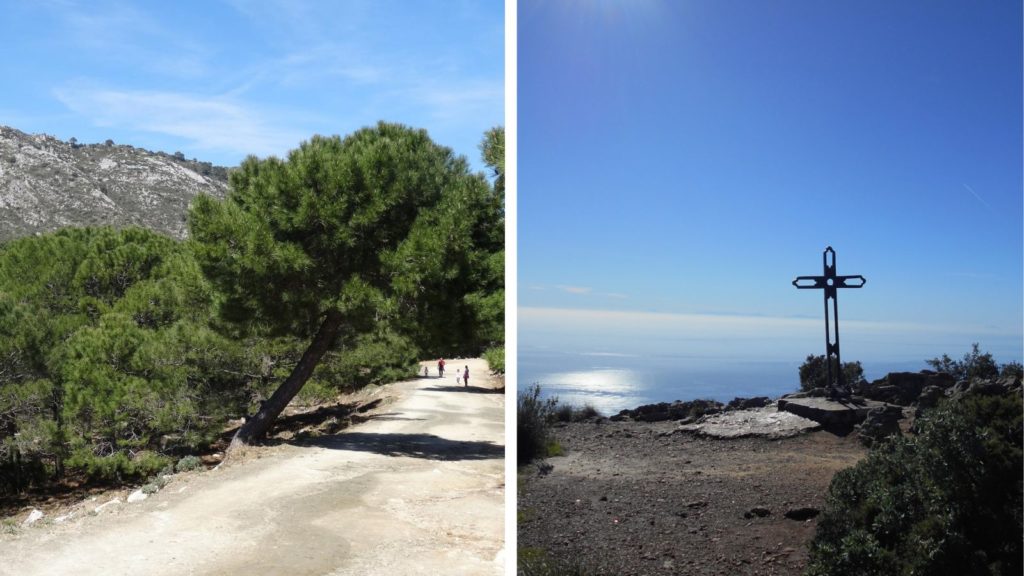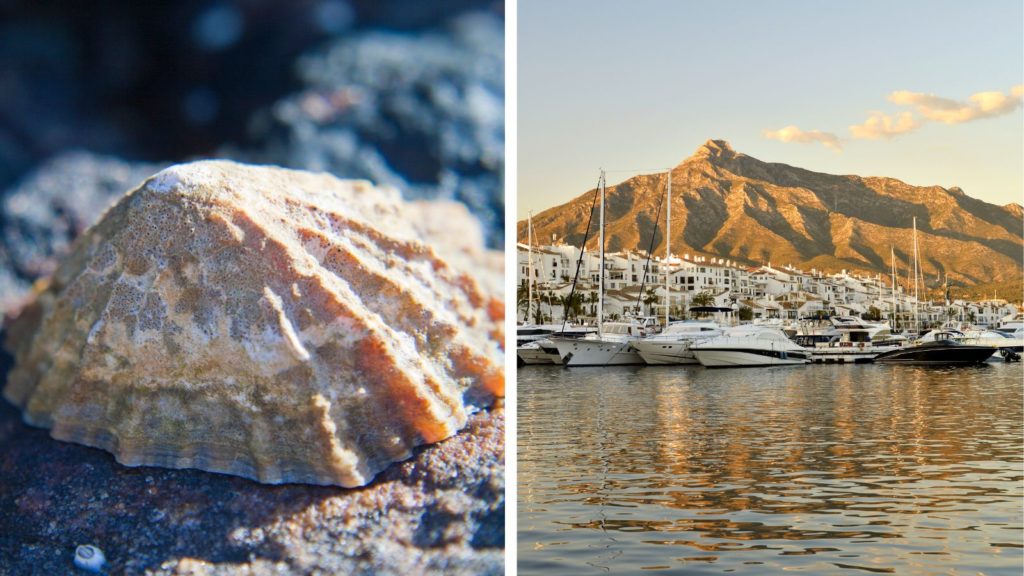
The province of Malaga stands out for its notable altitude compared to other regions of Spain, thanks to the presence of prominent mountain ranges in its territory. These mountains offer a variety of approved routes that facilitate the ascent to their main peaks. However, beyond these elevations, Malaga and Marbella offer a wide range of options of different levels for hiking, cycling, horse riding or backpacking. We are pleased to present some of the mountain routes and legends of Malaga and Marbella.
Mountain routes in Malaga: Montes de Malaga
Malaga is known for its abundance of mountain systems, highlighting among them the Montes de Málaga, located just five kilometres north of the city. These mountains are characterised by a rugged relief, which makes some of their passes practically impassable. But this does not mean that it is inaccessible. On the contrary, it has numerous routes of which we will highlight two.
Mirador del Cochino
750 metres in height, this viewpoint is somewhat close to the city. This makes it the perfect place for those who like views and for people who want to include the sea in their photographs. Specifically, you will be able to see the wide Bay of Malaga. Its name comes from a unique sculpture of a wild boar made by the sculptor Francisco Martín. He completed out by collecting scrap metal remains from the Parque Natural Montes de Málaga [Natural Park].
It is a moderately difficult route but with some steep slopes. It takes about three and a half hours to complete, and can be done either on foot or by mountain bike. If you go up here, you will find the following flora: Aleppo pine, holm oaks, cork oaks, honeysuckle, fennels and gall oaks. As for the fauna, which is more difficult to see, in the area there are wild boars, chameleons, foxes, red squirrels, mountain goats, dwarf bats, weasels and birds of prey.
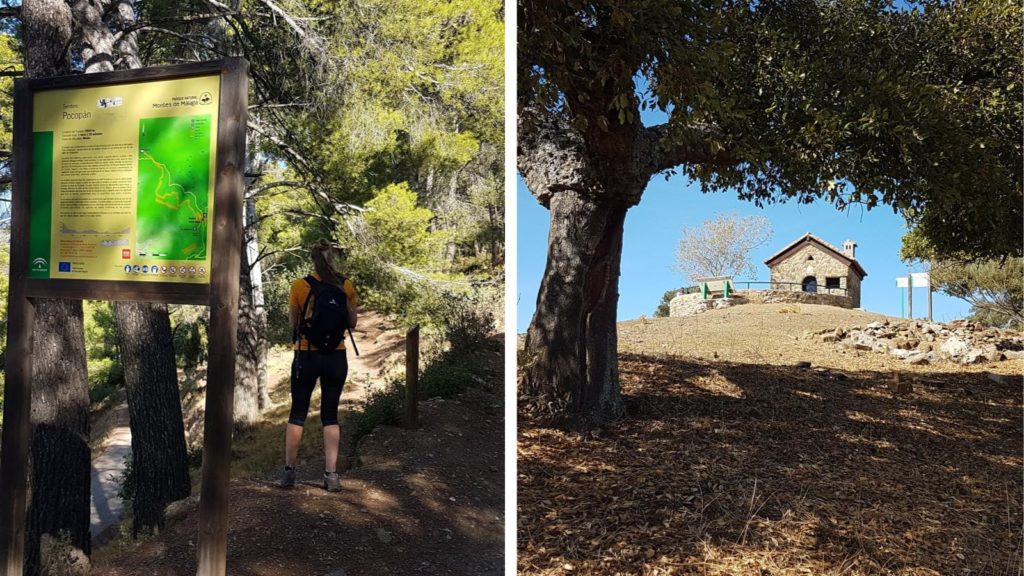
Pocopan Trail
We propose a route suitable for family and children. It is of moderate difficulty and takes about 2 and a half hours to complete. It is a path that runs through the middle of a pine forest and has a great reward. It ends in a little stone house, almost like a fairy tale, with beautiful views. This small construction was actually once a fire surveillance booth.
Its name, “poco-pan” relates a legend that comes from one of its first inhabitants. He used to say that on his land there was “a lot of wine and little bread” because, at that time, wheat was not grown on the land, but the mountain was dedicated to the cultivation of vines.
It is important to know that, during the 19th century, freedom of cultivation was established in Malaga. The vine spread exponentially and created an entire wine industry in the city. Unfortunately, in 1877, a pest known as 'Phyloxera' attacked the plants irremediably. The tradition of wine and raisins almost became extinct but it has been reborn in some towns in the province. Be sure to try the sweet Malaga wine or other varieties. To learn more about Malaga’s designation of origin wines, you can continue reading here.
Mountain routes in Marbella: Sierra Blanca
Sierra Blanca in Marbella is a mountain range that is made up of whitish limestone rocks that give it its colour and its name. Within its mountain range we find other important peaks such as El Lastonar, which is 1,275 metres and Juanar, which is1,178 metres. It is charming to walk its trails but it is important to plan the routes to know the different degrees of difficulty. As mountaineers in the area say “you have to have respect for the mountains.”
Climb to Juanar
The climb to Juanar is very popular due to its views and because the mountain is known for having an imposing cross at its summit. This cross has its legend. The oldest people in Marbella say that, in the 18th century, some sailors who were fishing were shipwrecked due to a horrible storm. Desperate because they couldn't get their bearings and were going to drown, they promised to put a cross wherever they set foot. The crew arrived safely at the beaches of Marbella and kept their promise. They climbed to the peak of Juanar with a wooden cross moved by faith and gratitude.
The people of Marbella began to make pilgrimages to it. Years passed and the cross began to rot. In the early 1900s it was replaced by an iron cross. This also suffered damage during the Spanish Civil War of 1936. Years later, on the back of mules, the locals took the cross to the top again.
It is very interesting to know that the iron of the cross is taken from the rails of the Mina del Peñoncillo railway. This mining operation carried the magnetite extracted from the mountains of Marbella to the beach, and from there to the sea itself to be transported by boat. If you look, on Cable Beach in Marbella there are the remains of the last pole that reached the boats.
To do this route and reach the summit you have to be in shape because the first section is easy, if you start from the Juanar Refuge, but it gets more difficult. It takes at least an hour and a half to go up and the same to go down. It is very important to bring, in addition to water, sunscreen and different layers of clothing because the temperature can vary greatly on the way up.
Climb to La Concha
Everyone who knows Marbella thinks of the beautiful mountain that protects the city and contributes to the microclimate of the area. It is a symbol of its landscape. We are talking about the peak of La Concha, 1,215 metres in height. Its name, very Mediterranean, is given because the mountain seen from the west resembles a striated mollusc, a shell facing downwards, specifically a limpet.
Going up to La Concha is a highly difficult route. Even for hikers who have been practising for many years it would be rather medium-high. It takes at least two to three hours on the way up, and the same on the way down (from the Juanar Shelter). It is a privilege to reach the summit and see a panoramic view of beautiful Marbella and its surroundings. After having climbed once, you no longer forget. Whoever has done it smiles inwardly when he sees the peak of La Concha from the city.
When you arrive, you will find a pleasant surprise. There is a bench of solidarity to take in the views. The Marbella firefighters uploaded it to give visibility to the DEBRA association, which is dedicated to helping people with “Butterfly Skin”. This is a rare and difficult disease to deal with and certainly needs support.
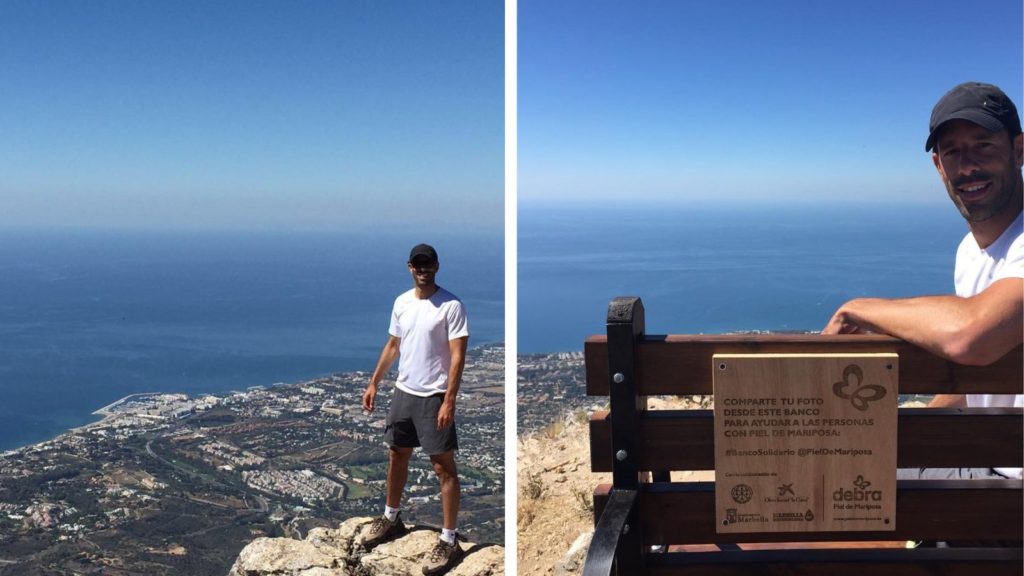
One of the first to join this beautiful cause was the former footballer Ruud Van Nistelrooy. He climbed La Concha and put photos of the feat on his social networks. Being someone who favoured social media, he gave great support to the association by getting thousands of interactions on Facebook and Instagram.
We hope you are encouraged to enjoy the extraordinary nature that the Costa del Sol offers. We wanted to instil in you a little passion for the mountain routes and legends that Malaga and Marbella offer.
If you are looking for a luxury property with mountain views, the best ones are in Benahavis. They can also look for properties with views of golf courses, which often include areas of greenery in the surrounding area. For any other questions about luxury properties in Marbella, Malaga and surrounding areas, do not hesitate to contact us.
We are the experts in luxury lifestyle and top properties on the Costa del Sol.
